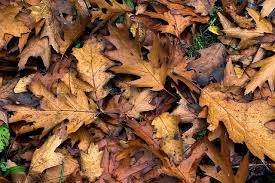It is that time of year again when leaves are falling and completely covering landscapes. If you don’t enjoy raking, bagging, and dragging leaves to the curb, you can reuse them as mulch. In nature, leaves act like a blanket that protects the roots of trees and plants from very cold temperatures. If you remove leaves, you’ll need to replace them with another type of mulch to protect the root systems. Large, whole leaves often blow around and won’t stay in garden beds, so it’s important to shred them with a lawn mower, bagging attachment, or leaf shredder to help them stay in place.

Spread a 3- to 5-inch layer of shredded leaves around trees, shrubs, and flowers. If you don’t like how shredded leaves look, you can use them as the bottom layer and put bark or pine straw on top. This also helps you use less store-bought mulch. If you mix leaves into a fall vegetable garden, they will break down into rich soil by next spring.
Fall is also the best time to plant trees, shrubs, vines, groundcovers, perennials, and cool-season flowers. Plants put in the ground during fall need less water and are less likely to struggle during hot, dry weather next summer. Be sure to mulch new plants right after planting to reduce weeds and give them extra protection. Even if the tops of plants look dormant during the winter, the roots are still growing underground. Mulch helps new trees and shrubs adjust to cold weather and develop stronger root systems. By spring, they will be better prepared for dry conditions and ready to grow.
By putting fallen leaves to good use, you protect your plants, enrich your soil, and cut down on extra yard work. Instead of spending hours raking and bagging, you can turn those leaves into a natural, effective mulch that benefits your landscape all winter long. Shredded leaves provide warmth, improve soil structure, and support strong root growth when plants need it most. A little effort now will pay off with healthier plants, better soil, and a landscape that is ready to thrive when spring arrives.